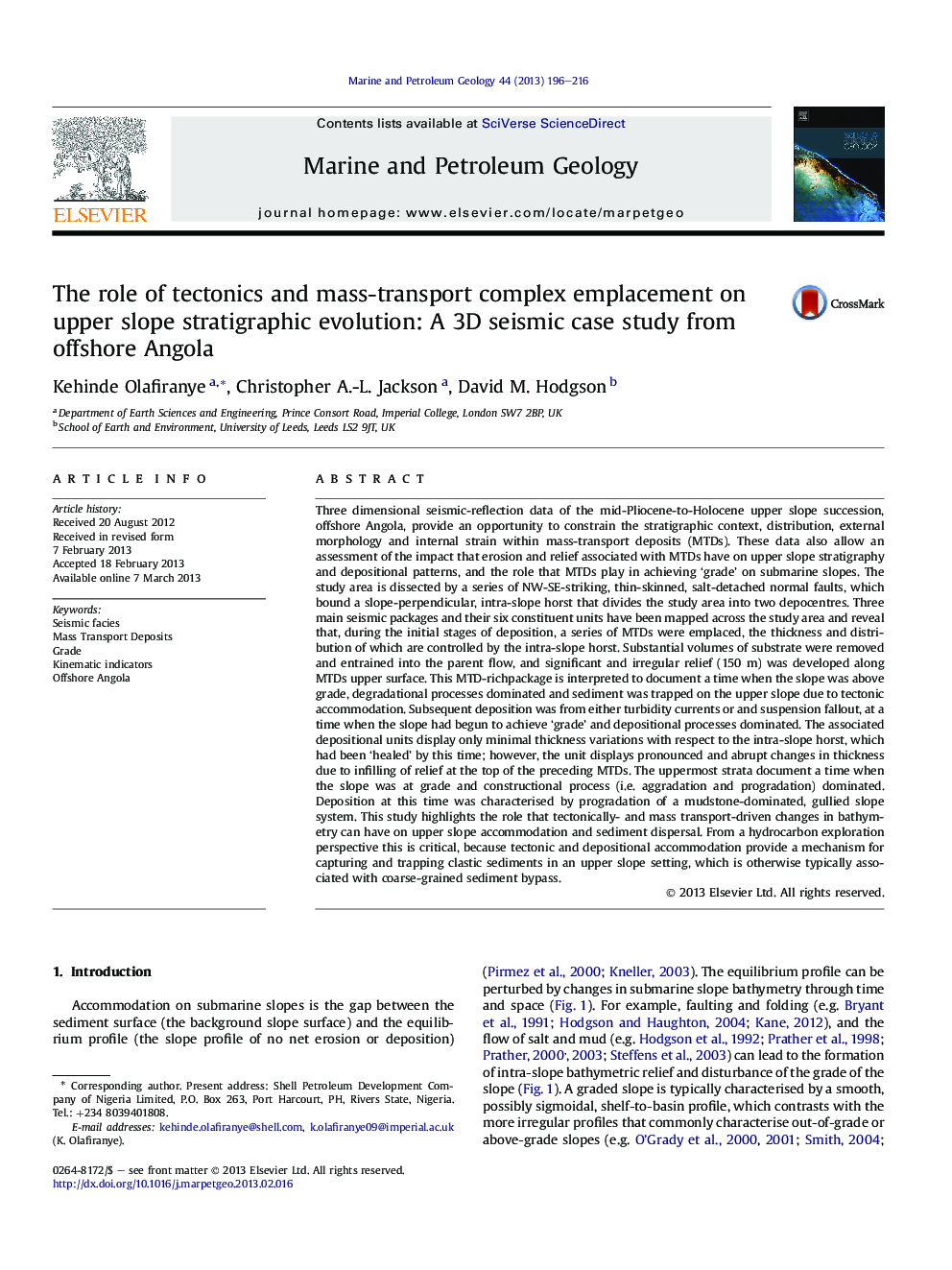| Article ID | Journal | Published Year | Pages | File Type |
|---|---|---|---|---|
| 4695695 | Marine and Petroleum Geology | 2013 | 21 Pages |
Three dimensional seismic-reflection data of the mid-Pliocene-to-Holocene upper slope succession, offshore Angola, provide an opportunity to constrain the stratigraphic context, distribution, external morphology and internal strain within mass-transport deposits (MTDs). These data also allow an assessment of the impact that erosion and relief associated with MTDs have on upper slope stratigraphy and depositional patterns, and the role that MTDs play in achieving ‘grade’ on submarine slopes. The study area is dissected by a series of NW-SE-striking, thin-skinned, salt-detached normal faults, which bound a slope-perpendicular, intra-slope horst that divides the study area into two depocentres. Three main seismic packages and their six constituent units have been mapped across the study area and reveal that, during the initial stages of deposition, a series of MTDs were emplaced, the thickness and distribution of which are controlled by the intra-slope horst. Substantial volumes of substrate were removed and entrained into the parent flow, and significant and irregular relief (150 m) was developed along MTDs upper surface. This MTD-richpackage is interpreted to document a time when the slope was above grade, degradational processes dominated and sediment was trapped on the upper slope due to tectonic accommodation. Subsequent deposition was from either turbidity currents or and suspension fallout, at a time when the slope had begun to achieve ‘grade’ and depositional processes dominated. The associated depositional units display only minimal thickness variations with respect to the intra-slope horst, which had been ‘healed’ by this time; however, the unit displays pronounced and abrupt changes in thickness due to infilling of relief at the top of the preceding MTDs. The uppermost strata document a time when the slope was at grade and constructional process (i.e. aggradation and progradation) dominated. Deposition at this time was characterised by progradation of a mudstone-dominated, gullied slope system. This study highlights the role that tectonically- and mass transport-driven changes in bathymetry can have on upper slope accommodation and sediment dispersal. From a hydrocarbon exploration perspective this is critical, because tectonic and depositional accommodation provide a mechanism for capturing and trapping clastic sediments in an upper slope setting, which is otherwise typically associated with coarse-grained sediment bypass.
Graphical abstractFigure optionsDownload full-size imageDownload as PowerPoint slideHighlights► We distinguished and classified tectonic and depositional accommodation. ► Kinematics indicators material have been removed as it ‘dilute’ the paper somewhat. ► We have enhanced the annotations of majority of the figures in the paper.
